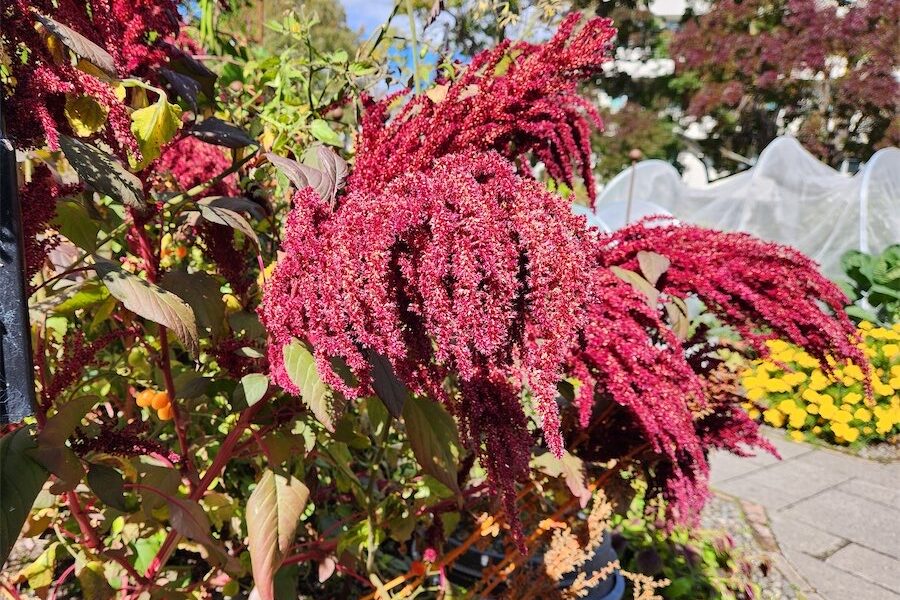Gardening writer JACKIE WARBURTON is enjoying the colour from a new annual herb plant that she reckons is easy to grow.
The fast-growing annual Amaranth caudatus is a new herb plant I’m trying this year.

It’s coming into flower now and its vibrant colour and branched inflorescence is really putting on a show.
It’s easy to grow, but must be direct sown in spring next year for a summer display.
Amaranthus can be ornamental or edible. If using them ornamentally in the garden, the colour deepens throughout summer. It makes a terrific cut flower. It’s also popular in dried flower arrangements.
The most common variety is red but having looked at a few new seed catalogues, there are yellow flowering Amaranthus with wonderful names such as Hot Biscuit and common names as Love Lies Bleeding. Amaranth in the kitchen is a seed not a grain and, when cooked, it can have a porridge consistency. It can be eaten raw or cooked.
Amaranth likes to grow with corn and plants of the Solanaceae family such as potatoes, tomatoes and eggplants.
The roots of amaranth plants are also a terrific soil breaker and a cover crop before root vegetables get planted and can be easily added to a crop-rotation program.
Once the autumn frost arrives, the plants will die. To save seed, cut dried seedheads and place them in a paper bag or envelope and sow in late October, early November or when the soil has warmed to more than 25C.
Direct sow where they will enjoy a hot summer and water when they need it, The flowers will put on a show right through summer and autumn.
There is the cousin of A. caudatus and that is A. retroflexus, commonly known as redroot amaranth. It is a weed in our region, so be sure to plant the correct plant each year.

LOTS of summer ground covers are flowering well now and some of the grevilleas, straw flowers and Myoporums in my garden are in full white bloom and look spectacular.
They’re popular plants that grow well in our region and survive our frosts. They grow fast and are great to fill a dry spot as well. Myoporum parvifolium is a fine leaf form and does a terrific job at covering the ground and flowering in the heat.
Their flowers are either pink or white, star shaped and a magnet for bees. They need to be planted two metres apart and will cover a large area if required. Keep them watered and ensure the area is weed free and mulched to keep the roots moist. Once established, they will require little care.
They are easy to propagate from stems about 10 centimetres long, stripped of leaves on the lower end of the stem and planted in seed-raising mix.
Kept moist, they’ll strike quite easily and if they get growing fast now, they can be ready for planting in autumn, before the cold weather sets in.
FEBRUARY is the hottest month, and very little planting should be added unless there is some extra TLC.
The whole garden will benefit from a foliar feed done in the cool of the day.
A seaweed solution can be used, but also steeped manure and weeds can be an alternative.
Deadheading of roses and summer flowers can be done and a trim of citrus trees, if needed. Remove dead, damaged or diseases branches and shorten branches where needed.
Fertilise now and keep watering and they’ll flower and fruit through winter.
Jottings…
- Keep picking beans to induce more flowering.
- Cut excess foliage from pumpkin vines.
- Summer pruning of stone fruit.
- Propagate lemongrass and tarragon in pots for winter.
Who can be trusted?
In a world of spin and confusion, there’s never been a more important time to support independent journalism in Canberra.
If you trust our work online and want to enforce the power of independent voices, I invite you to make a small contribution.
Every dollar of support is invested back into our journalism to help keep citynews.com.au strong and free.
Thank you,
Ian Meikle, editor






